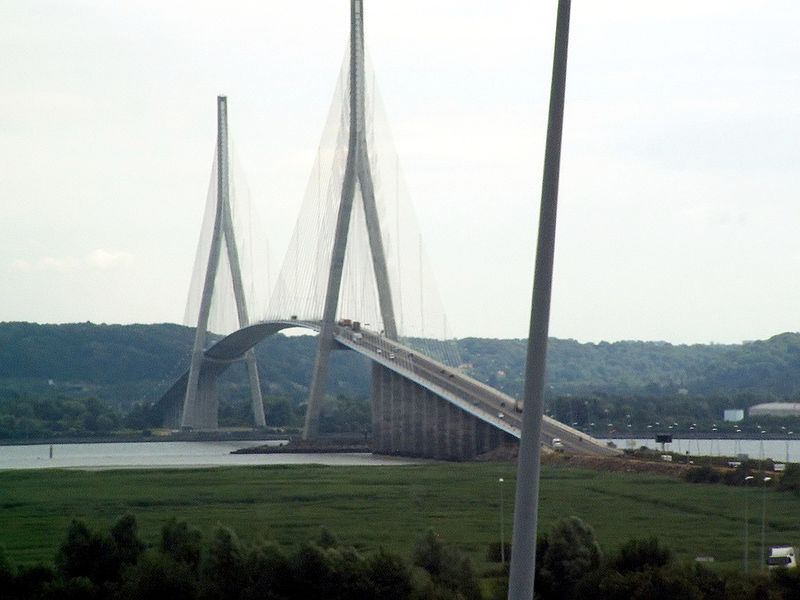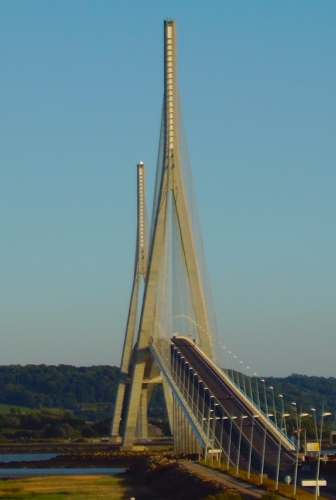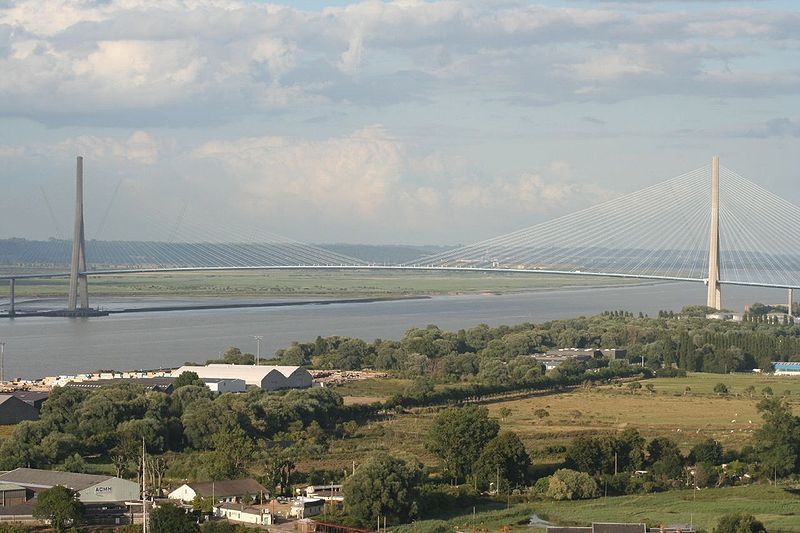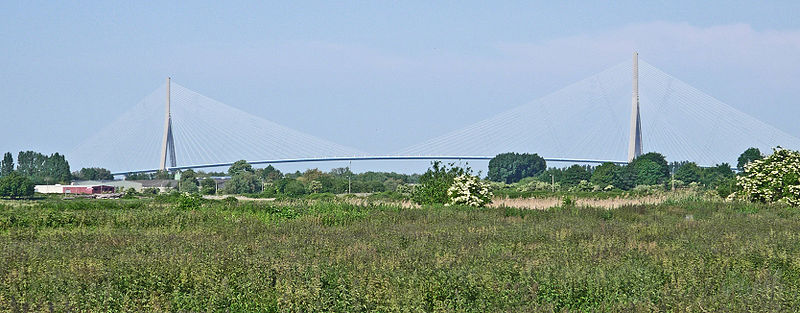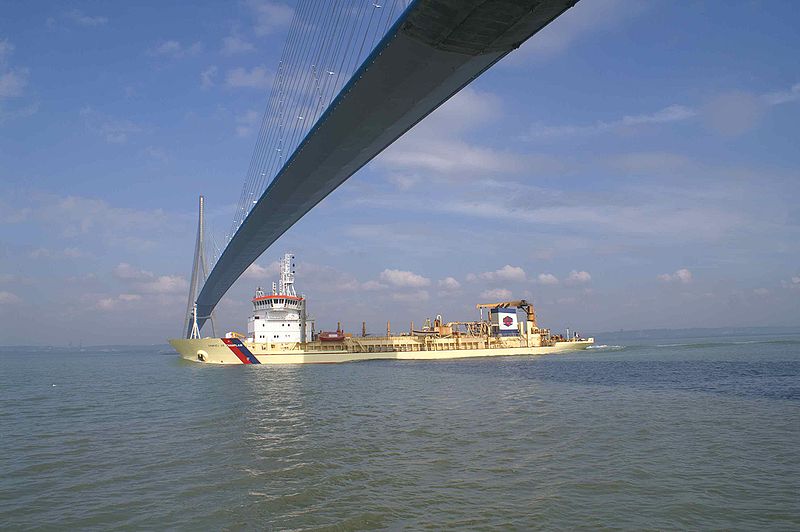| |||||||
Europe
North AmericaSouth AmericaAsiaAustralia and OceaniaAfrica |
Смотрите также: Pont de Normandie The Pont de Normandie is a cable-stayed road bridge that spans the river Seine linking Le Havre to Honfleur in Normandy, northern France.
Pont de Normandie Carries A29 autoroute Crosses Seine Locale Le Havre–Honfleur, France Design Cable-stayed bridge M. Virlogeux, F. Doyelle, C. Lavigne Total length 2,143.21 metres (7,032 ft) Width 23.60 metres (77 ft) Height 214.77 metres (705 ft) Longest span 856 metres (2,808 ft) Opening date 1995
Construction The bridge was designed by Michel Virlogeux with the help of Igor Zizic. The architects were François Doyelle and Charles Lavigne. Construction by Bouygues, Campenon Bernard, Dumez, Monberg & Thorson, Quillery, Sogea and Spie Batignolles began in 1988 and lasted 7 years. The bridge opened on 20 January 1995.
At that time the bridge was both the longest cable-stayed bridge in the world, and had the record for the longest distance between piers for any cable-stayed bridge. It was more than 250 m longer between piers than the previous record. This record was lost in 1999 to the Tatara Bridge in Japan. Its record for length for a cable-stayed bridge was lost in 2004 to the 2883 meters of the Rio-Antirrio. At the end of construction, the bridge had cost $465 million and was financed by Natixis. The cable-stayed design was chosen because it was both cheaper and more resistant to high winds than a suspension bridge.
Structure The span, 23.6 metres (77 ft) wide, is divided into four lanes for traffic and two lanes for pedestrians. The pylons, made of concrete, are shaped as upside-down Ys. They weigh more than 20,000 tons and are 214.77 metres (705 ft) tall. More than 19,000 tons of steel were used and 184 cables were used.
Comments: 0 |
|
|||||







































